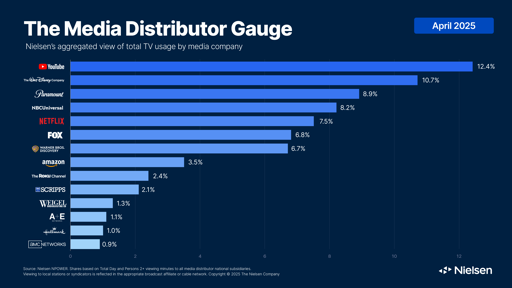Your household smart products must respect your privacy – including your air fryer
-
Again. That's a lack of skill. Why is it my problem?
If they can't be bothered to do 5 minutes of research before buying something, that's on them.
Caveat emptor.
Why is it my problem?
Because when manufacturers see that they can get away with this shit, they will all start doing it, and then you can stick up your research because there will be nothing else.
-
Why is it my problem?
Because when manufacturers see that they can get away with this shit, they will all start doing it, and then you can stick up your research because there will be nothing else.
Only if it's made too hard for a new company or more options to emerge.
-
If you can't be bothered to take a few extra minutes to do that, then quite frankly, you deserve to be fucked by scammers.
and this is exactly how being fucked by scammers will become normal
stop with your fucking elitism and start thinking what to do for those whos work/hobby is not in IT, because that's 99.999% of people.
It's not elitism to say "If you want something done right, do it yourself."
Elitism?
Dude. I am an almost 50 year old, former truck driver with no formal education on any of this shit, and yet, I managed to figure it out.
If you can't, then that's most assuredly a YOU problem.
SURELY you're smarter than a truck driver?
-
it is first and foremost a
Hardware issue.
but also who the fuck wants to have a power hungry PC as the router. old PC, so we can probably count with 80 W at the least
but also, how the fuck would a PC help with the skill issue?
Here, let me help.
Less than 20 USD.
Like I said. Not willing to even try to look for something appropriate for your use case.....
-
It's not elitism to say "If you want something done right, do it yourself."
Elitism?
Dude. I am an almost 50 year old, former truck driver with no formal education on any of this shit, and yet, I managed to figure it out.
If you can't, then that's most assuredly a YOU problem.
SURELY you're smarter than a truck driver?
It's not about me, but about all the people around me
-
It's not about me, but about all the people around me
So punish those of us who do know how to make the cheap stuff work in a way we want, by removing the cheap stuff from the market, because other idiots don't?
Yeah, solid idea.
-
This post did not contain any content.
Someone please make a Bluetooth equivalent for smart devices. My thermostat doesn't need internet access but standardized wireless control is still a good feature
-
So punish those of us who do know how to make the cheap stuff work in a way we want, by removing the cheap stuff from the market, because other idiots don't?
Yeah, solid idea.
where did I recommend that?
-
where did I recommend that?
It is a natural consequence of tighter regulations.
-
I will never allow IoT devices into this house unless they can be used offline.
I bought a kettle with some WiFi features, but never planned to put it on my network as it works without it. Or was supposed to, at least. The thermostat was erratic and it needed a firmware update to fix it, only installable via this WiFi-connection. I set up a temporary VLAN just for the update, and disabled the VLAN right after. Then I took a shower.
I find it odd that one of its core features worked so poorly out of the box. And it's not like it was a way to trick me into connecting it either, as I first got a replacement part because they didn't know what the issue was.
-
Someone please make a Bluetooth equivalent for smart devices. My thermostat doesn't need internet access but standardized wireless control is still a good feature
Zigbee or z-wave for example?
-
I will never allow IoT devices into this house unless they can be used offline.
I know everyone points out the problems with Nest, Ring, and various talking/listening/spying agents. For me, one of the worst offenders was a garage door motor that came with WiFi capability. Damn thing has the ability to just open up a door on my house on command. There's no way am I putting that online.
-
This post did not contain any content.
P2P + IoT could be great for safety and privacy. We should just remove the middle men (datacentres, servers) so that data travels between the devices you own, and not via some data vampire trying to get in the way.
-
It is a natural consequence of tighter regulations.
to me that sounds like arguing that banning behavioral advertising would result in all monetarily free social platforms stopping to exist
chinese tech was cheap even before datamining and IoT was a thing. "banning" datamining wouldn't make chinese tech expensive
-
This post did not contain any content.
Oh fuck all this…
-
I know everyone points out the problems with Nest, Ring, and various talking/listening/spying agents. For me, one of the worst offenders was a garage door motor that came with WiFi capability. Damn thing has the ability to just open up a door on my house on command. There's no way am I putting that online.
A door to what is arguably the most valuable item you own.
-
Easy enough! except, that most people don't even know what is a VLAN, let alone have any network device that supports it. It takes a special kind of router to have such settings, and no, OpenWRT is not the solution for that as they have limitations on the minimum amount of memory the device has to have
It takes a special kind of router to have such settings
Eh, most good quality routers from reputable companies can handle separate VLANs just fine. My old Asus RT-N66U had that capability right out of the box.
But, as already stated, most people don't even change the default password on their router, much less know what a VLAN even is.
-
Here, let me help.
Less than 20 USD.
Like I said. Not willing to even try to look for something appropriate for your use case.....
That's an auction, my dude. It's already at $26, not including the $22 shipping charge.
-
This post did not contain any content.
Smart appliances are so pointless. Does my toaster make toast? Yes? Then why the hell does it need WiFi access!?
-
So it's a skill issue, then? Got it. Any old PC + a $10 pcie network adapter can be turned into a router capable of it.
You need to readjust your point of view, friend. It's not a skill issue. It's a "most people don't have the kind of experience necessary to even begin to understand what goes on inside the magic internet box" issue. You're speaking on a completely different level.
- The average Joe doesn't possess that capability in the slightest. It's just Joe from Finance. The only time they interact with a computer in any meaningful capacity is at work, where IT fixes their problems.
- The average Joe is someone who declares "the wifi is broken" when they forget the password to their online banking portal.
- The average Joe will take their kid's stick-drifting Nintendo Switch to the Geek Squad at Best Buy and get upsold a Switch 2 instead of listening to their kid and getting it fixed at the local repair shop next door for $50.
Do you see where I'm going with this?






